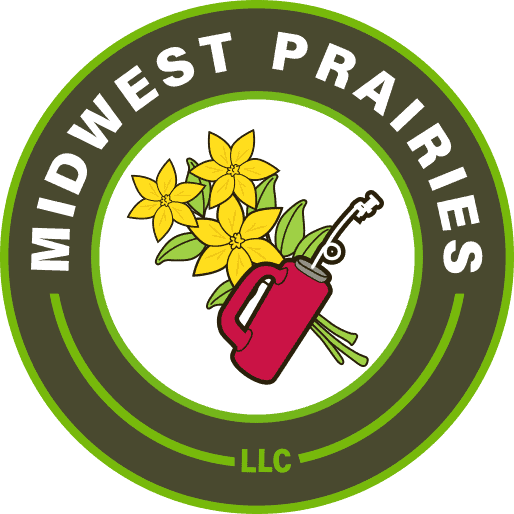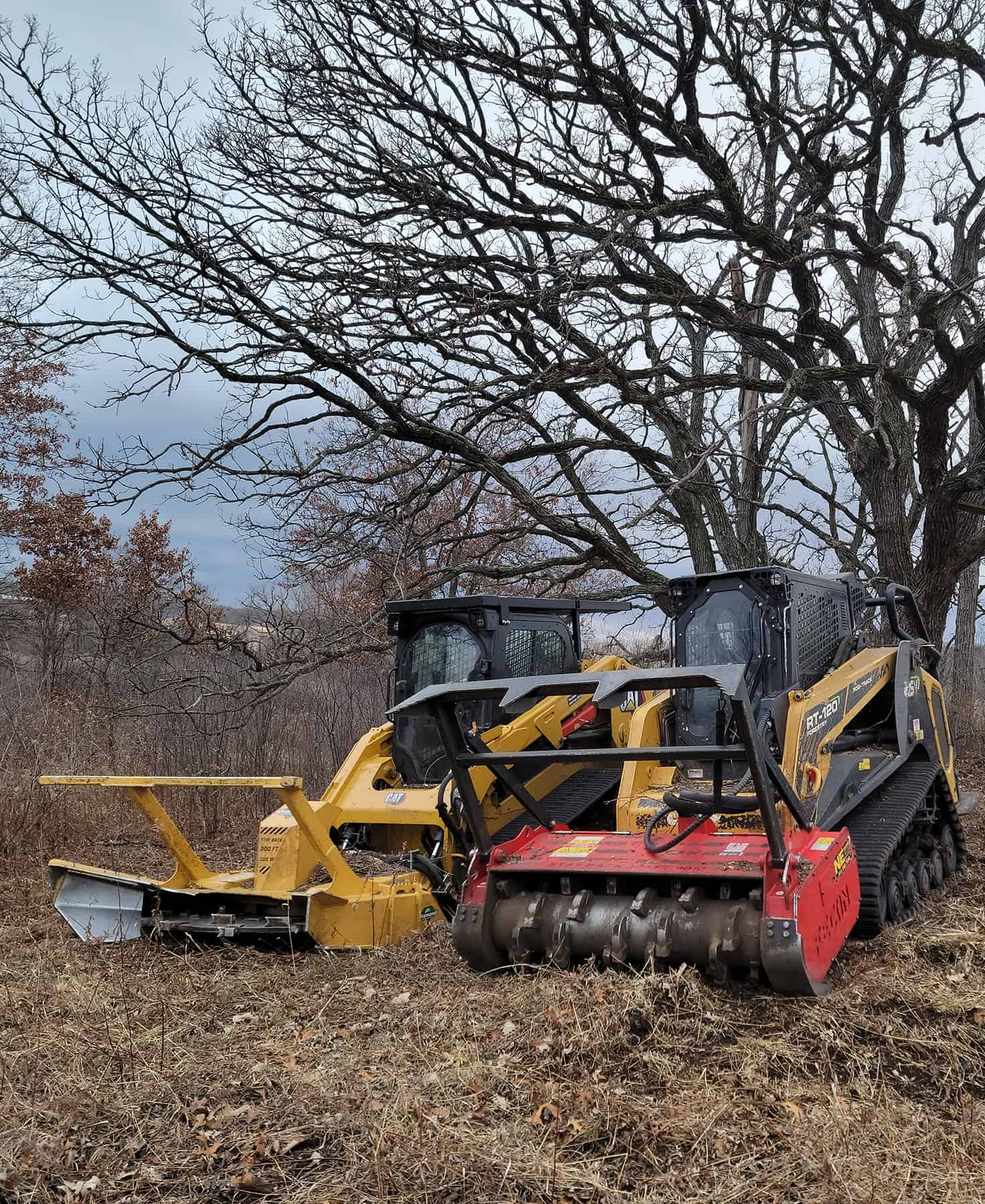Seeding & Planting
seeding
Replacing invasive species with native plants can be a great way to restore and protect natural habitats.
Seeding and planting are two common methods used to establish native plants in an area previously occupied by invasive species. Here’s an overview of both methods:
- Seeding is the process of scattering native plant seeds over an area to establish new plants. Seeding is often used when the soil is bare or when the invasive species have been removed from an area. Seeding can be done by hand or with a mechanical seeder. The success of seeding depends on the seed quality, proper site preparation, and favorable weather conditions. It is essential to choose the right native plant species that are adapted to the local climate, soil, and other environmental conditions.
Seed mixtures containing multiple native species are often used to increase biodiversity and improve the chances of success. Midwest Prairies has a no-till seed drill manufactured by Great Plains. This drill is designed specifically for native species. We also have a “whirly seeder” that allows us to spread seed over large areas efficiently. For small areas we use a variety of techniques to spread seed by hand.
- Planting involves physically transplanting native plants from another location into the restoration site. Planting is often used when the soil has been disturbed or when the invasive species have created dense patches that are difficult to remove. Planting can be done using plugs, bare-root plants, or container-grown plants. It is important to select the right plant species and ensure that they are healthy and free from diseases or pests.
Proper planting techniques, including site preparation, planting depth, and watering, are critical for the success of the restoration project. We recommend native species grown locally from local genetic sources. This includes trees which may otherwise come from hundreds of miles away. We have several sources for locally grown trees and plants and can install them in virtually any application.
Both seeding and planting are effective methods for replacing invasive species with native plants. However, it is essential to consider the specific site conditions and choose the most appropriate method for each restoration project. It is also important to monitor the restoration site regularly to detect any invasive species or other problems and take corrective actions as needed.
Restoring the habitats and ecosystems of southern Wisconsin
We work with private land owners, park districts, state agencies, and others who wish to bring about a land restoration and enhance the environment.


